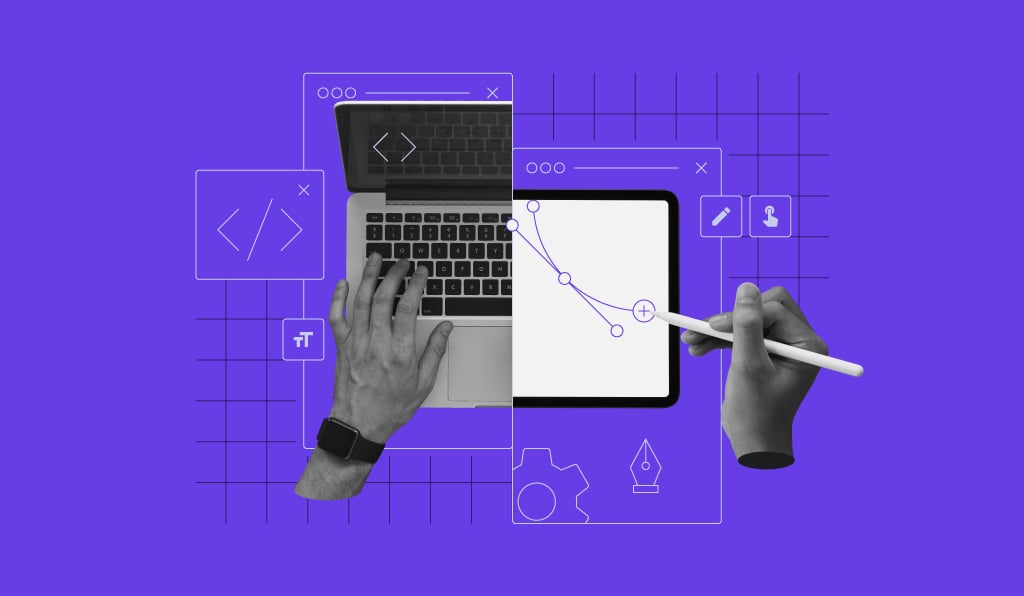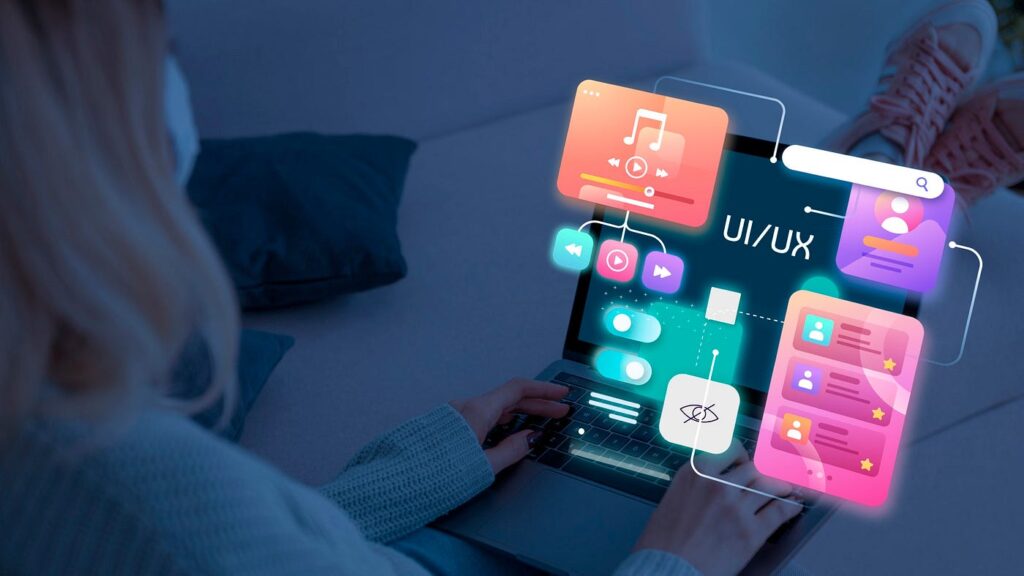The realm of web design is ever-evolving, driven by technological advancements, user preferences, and the pursuit of optimal user experiences (UX) and user interfaces (UI). As we venture into the future, it’s essential to delve into the emerging trends and innovations shaping the landscape of UX/UI design. From augmented reality (AR) integration to AI-powered personalization, let’s explore the exciting developments that are reshaping the future of web design. Keep in mind that you can get more detailed information about everything through various online courses and groups, and an internet service provider that manages IT services in San Antonio provides internet to its users with the help of which they can easily access these types of learning.
Augmented Reality (AR) Integration

Augmented reality (AR) has emerged as a game-changer in the realm of web design, offering immersive experiences that blur the lines between the digital and physical worlds. With the widespread adoption of AR-enabled devices, such as smartphones and smart glasses, designers are harnessing the power of AR to create interactive and engaging user experiences.
AR integration in web design allows users to visualize products in real-world environments before making a purchase, revolutionizing the e-commerce landscape. From trying on virtual clothing to previewing furniture placements in a room, AR enhances the decision-making process for consumers, ultimately driving sales and enhancing brand engagement. Such creative and useful possibilities add to the good promotion of the brand, with which it becomes more recognizable and reliable for customers, if your business needs good promotion, look for an excellent Colorado Springs SEO company that will create an excellent promotion plan for you.
Furthermore, AR-powered navigation systems are transforming how users interact with websites and applications, providing intuitive guidance and enhancing spatial awareness. Whether it’s navigating a virtual museum exhibit or exploring a city’s streetscape, AR-driven navigation enhances user experiences by providing contextual information in real time. This is already used a lot in cars to ensure a pleasant and safe ride adapted to the weather conditions and road conditions, but in addition to that, you will definitely need a roadside assistance app, especially if there is an accident or a breakdown in the car.
Incorporating AR into web design requires a seamless integration of digital content with the physical environment, necessitating innovative approaches to interface design and user interaction. As AR technology continues to mature, we can expect to see even more sophisticated applications that redefine the boundaries of web design and user experience. It is up to the new generations to master these tasks and come up with creative solutions for the future, and if the students do not really have that strong point, they can look for an excellent science tutor in Boulder with whom they will easily master their material and pass all the tests.
AI-Powered Personalization
Artificial intelligence (AI) is revolutionizing the way websites and applications personalize content and interactions based on user behavior and preferences. Through machine learning algorithms, AI-powered personalization analyzes vast amounts of data to deliver tailored experiences that resonate with individual users. If you rent a car in Beograd and visit one of the excellent European seminars dedicated to the development and impact of advanced technologies in everyday life, you will certainly be able to learn a lot more about all this and get answers to all your questions.
From recommending personalized product suggestions to dynamically adjusting website layouts based on user preferences, AI-driven personalization enhances engagement and conversion rates by delivering content that is relevant and timely. By leveraging user data such as browsing history, purchase behavior, and demographic information, AI algorithms can anticipate user needs and preferences, providing a customized experience that fosters loyalty and satisfaction. The introduction of such services in certain businesses will certainly please customers and users, which is why you can work to find excellent associates and partners with M&A business advisors who will help you improve your business in the right way.
Furthermore, AI-powered chatbots and virtual assistants are transforming customer service interactions, providing instant support and guidance to users 24/7. By leveraging natural language processing (NLP) and machine learning capabilities, these virtual assistants can understand user queries and provide relevant information and assistance in real time, enhancing the overall user experience.
As AI technology continues to evolve, we can expect to see even more sophisticated applications of AI-powered personalization in web design, further blurring the lines between human and machine interaction. By harnessing the power of AI, designers can create more intuitive and personalized experiences that anticipate user needs and preferences, driving engagement and loyalty. The application of this technology can also be used very well in the production of meaningful personalized items, such as beautiful saddle blankets for which AI can give you a pattern that suits your personality.
Voice User Interface (VUI) Design
The rise of voice-enabled devices such as smart speakers and virtual assistants has ushered in a new era of interaction design, where voice user interfaces (VUIs) play a central role in shaping user experiences. VUI design focuses on creating intuitive and seamless interactions between users and voice-enabled devices, leveraging natural language processing and machine learning algorithms to understand and respond to user commands.
Voice user interfaces offer a hands-free and intuitive way for users to interact with websites and applications, making tasks such as searching for information, setting reminders, and controlling smart home devices effortless. By integrating VUIs into web design, designers can create more inclusive and accessible experiences that cater to a diverse range of users, including those with disabilities or limited mobility. This is also an important addition in the car while driving, so that the driver can find out the information he needs without taking his eyes off the road, and you can get this kind of addition or some more interesting and significant improvements at an excellent transmission service in Buffalo.
Furthermore, VUI design presents new opportunities for brands to engage with their audience in innovative ways, such as creating interactive voice-based experiences and branded voice assistants. By leveraging the power of voice technology, brands can establish deeper connections with their audience, fostering brand loyalty and engagement. This kind of application of new technology is slowly entering the field of medicine, facilitating diagnostics as well as talking to individual patients, if you have some symptoms and want the best, you can contact one of the excellent and reliable doctors at the health clinic in Marietta GA.
As voice technology continues to mature and become more ubiquitous, we can expect to see even greater integration of VUIs into web design, offering users seamless and intuitive interactions across a variety of devices and platforms. By embracing VUI design principles, designers can create experiences that are not only user-friendly but also empowering, revolutionizing the way we interact with the digital world. As it enters various fields AI facilitates many jobs and hobbies, with the help of such advancements and great youth organizations like Readathon school fundraiser, young people can quickly and easily develop a good reading habit.
Responsive Design for Multi-Device Compatibility

Responsive design has become a cornerstone of modern web development, ensuring optimal viewing experiences across a wide range of devices, from desktop computers to smartphones and tablets. With the proliferation of mobile devices and the increasing diversity of screen sizes and resolutions, designing websites that are responsive and adaptable has never been more critical.
By implementing responsive design principles, designers can create websites that automatically adjust their layout and content to suit the screen size and orientation of the device being used. This not only enhances usability and accessibility but also improves search engine visibility, as search engines prioritize mobile-friendly websites in their rankings. In addition, in order to stay safe while you enjoy browsing various online applications and sites, make sure to install a reliable access control system from Philadelphia, which is another positive example of the application of new technology and will provide additional security to your home.
Furthermore, responsive design facilitates a consistent user experience across different devices, eliminating the need for separate mobile and desktop versions of a website. This streamlines the development process and reduces maintenance overhead, allowing designers to focus on creating compelling content and engaging interactions that resonate with users regardless of the device they’re using. In addition, the work is much easier, and if you want to join one of the excellent fashion business course, you can find out how these useful features of new technologies can positively affect the development of your work.
As the trend towards mobile browsing continues to rise, responsive design will remain a crucial consideration for web designers seeking to deliver seamless and immersive experiences across all devices. By embracing responsive design principles and leveraging technologies such as CSS media queries and flexible grid layouts, designers can future-proof their websites and ensure they remain accessible and engaging for users on any device. In this case, whether you are in the comfort of your home or on a trip, or relaxing with homemade wine from fancy wine glasses, you can access websites perfectly adapted to the device you are using at that moment.
Dark Mode Design for Enhanced User Experience
Dark mode has emerged as a popular design trend in recent years, offering users a visually pleasing alternative to traditional light-themed interfaces. Dark mode not only reduces eye strain and conserves battery life, particularly on devices with OLED displays, but also provides a more immersive and cinematic experience for users.
Incorporating dark mode into web design requires careful consideration of color palettes, contrast ratios, and readability to ensure that content remains legible and accessible in low-light conditions. Designers must strike a balance between aesthetic appeal and usability, choosing colors and typography that complement the dark theme while maintaining clarity and readability. This view adds to the elegance and style of the page, which is especially important for some applications or events, and in order to present yourself in style and luxury, you can rent a limo in Denver for your special event.
Moreover, dark mode design presents new opportunities for creativity and expression, allowing designers to experiment with dramatic lighting effects, vibrant accent colors, and dynamic animations. By embracing dark mode design principles, designers can create visually striking and memorable experiences that captivate users and differentiate their websites from the competition. If you decide to invest smartly in one of the lifestyle properties like houses in Boca Falls, you will have the opportunity to enjoy a beautifully decorated home where the light is perfectly adjusted and you can devote yourself to the development of your design projects in a comfortable and beautiful way.
As more operating systems and applications introduce native support for dark mode, users have come to expect this feature in their web browsing experience. By incorporating dark mode into their designs, designers can cater to user preferences and provide a more customizable and personalized experience that enhances engagement and satisfaction. Different pages, adding a special option of dark mode affect the feeling of customers, which on the one hand is quite based on the psychology of sales, which you can learn more about if you rent a car in Beograd and visit some of the seminars and conferences in Europe that talk more about the tricks of marketing and trade.
Interactive Storytelling Through Web Design
Interactive storytelling has emerged as a powerful tool for engaging audiences and immersing them in narrative experiences that transcend traditional media formats. By combining elements of interactivity, animation, and multimedia content, designers can create dynamic and immersive narratives that captivate users and encourage active participation. That way you can relax and enjoy some content in the comfort of your own home while drinking warm natural tea and eating delicious milk chocolate edibles.
Web design offers a unique platform for interactive storytelling, allowing designers to leverage the full capabilities of the web to create rich and immersive experiences that unfold dynamically based on user input and engagement. From interactive timelines and scrolling narratives to immersive multimedia experiences, the possibilities for interactive storytelling in web design are limitless.
In case you’re looking for a new home, connecting with a trusted mortgage broker in Raleigh NC can simplify the process and help you secure the best financing options tailored to your needs.
Interactive storytelling enables users to become active participants in the narrative, shaping the story’s outcome through their actions and decisions. This level of engagement fosters a deeper connection between the audience and the content, resulting in a more memorable and impactful experience that resonates long after the story has ended.
Imagine strolling through the charming streets of St. Augustine, FL, where every step leads to a story waiting to be told. Just as interactive storytelling captivates audiences, the right company for paver sealing in St. Augustine FL can transform ordinary pathways into narratives of beauty and durability. Just like how designers craft engaging experiences, these experts ensure that every paver tells a tale of resilience and charm, creating a lasting impression on anyone who walks upon them.
Microinteractions for Delightful User Experiences
Microinteractions are subtle yet impactful design elements that enhance usability and delight users by providing feedback, guiding interactions, and adding personality to the user experience. From animated buttons and hover effects to progress indicators and notification alerts, micro-interactions play a crucial role in shaping the overall user experience and fostering positive user engagement.
One of the key benefits of micro-interactions is their ability to provide immediate feedback and visual cues that communicate the outcome of user actions. By incorporating subtle animations and transitions, designers can create interfaces that feel responsive and intuitive, reducing user frustration and increasing satisfaction.
When it comes to catering to specific needs, like dental services for kids in Fayetteville NC, micro-interactions play a crucial role. They give instant feedback and visual signals, making the user experience smooth and enjoyable. Through subtle animations and transitions, designers can make interfaces more responsive and easy to understand, ensuring that both children and parents feel comfortable and satisfied with the dental care provided.
Moreover, microinteractions can add a touch of personality and whimsy to the user experience, transforming mundane interactions into delightful moments of delight. Whether it’s a playful animation that responds to user input or a subtle sound effect that accompanies a successful action, micro-interactions can create memorable and engaging experiences that leave a lasting impression on users.
As attention spans continue to shrink and competition for user attention intensifies, micro-interactions will play an increasingly important role in differentiating websites and applications from the competition. By focusing on the details and incorporating thoughtful micro-interactions into their designs, designers can create user experiences that are not only functional and intuitive but also delightful and memorable.
Neuromorphic Design for Natural and Intuitive Interfaces

The neuromorphic design draws inspiration from the principles of neuroscience and cognitive psychology to create interfaces that mimic the behavior of natural systems, such as the human brain. By leveraging techniques such as skeuomorphism, affordances, and feedback loops, neuromorphic design aims to create interfaces that are intuitive, responsive, and easy to use.
One of the key principles of neuromorphic design is the use of familiar visual metaphors and cues that evoke real-world objects and interactions. By incorporating elements such as shadows, textures, and depth effects, designers can create interfaces that feel tactile and responsive, making it easier for users to understand and navigate.
Moreover, neuromorphic design emphasizes the importance of contextually relevant feedback and affordances that guide user interactions and reinforce desired behaviors. By providing clear and intuitive cues, such as animated transitions and subtle visual indicators, designers can create interfaces that feel natural and responsive, reducing cognitive load and enhancing usability.
As technology continues to advance, users are increasingly expecting interfaces that adapt to their needs and respond to their actions in intuitive and natural ways. Neuromorphic design offers a promising approach to creating interfaces that meet these expectations, providing users with seamless and engaging experiences that feel intuitive and effortless.
Conclusion
In conclusion, the future of web design is characterized by innovation, creativity, and a relentless focus on enhancing user experiences. From responsive design and dark mode to interactive storytelling and neuromorphic design, designers have a myriad of tools and techniques at their disposal to create compelling and memorable experiences that captivate users and drive engagement. By embracing these emerging trends and staying abreast of new developments in the field, designers can continue to push the boundaries of web design and shape the digital experiences of tomorrow.

